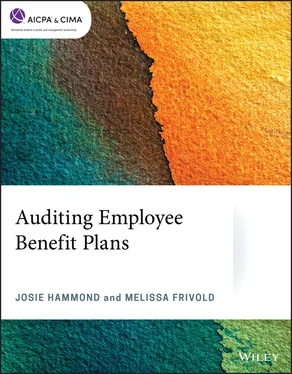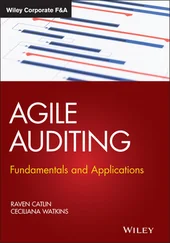Help desk.The EBSA provides technical guidance on the application of ERISA through Field Assistance Bulletins (FABs), which are posted to the EBSA’s website at https://www.dol.gov/agencies/ebsaunder Technical Guidance. FAB 2008-01 addresses the responsibilities of fiduciaries and trustees of ERISA-covered plans for collection of delinquent contributions.
Notes receivable from participants (participant loans)
Certain defined contribution plans allow participants to borrow against their vested account balance. Such participant loans are an extension of credit to a plan participant by the plan, in accordance with the plan document or the plan’s written loan policy. The loan is secured by the participant’s vested account balance. Participant loans should be classified as notes receivable from participants for reporting purposes, and should be measured at their unpaid principal balance plus any accrued but unpaid interest.
The fair value measurement guidance and disclosure requirements of FASB ASC 820 do not apply to participant loans. Also, the fair value disclosure requirements for financial instruments under FASB ASC 825-10-50-10 through 50-16 are not required for participant loans. In addition, participant loans are excluded from the definition of financing receivables under FASB ASC 310-10-50-5B and 310-10-50-7B. Therefore, these loans would not be subject to the requirements of FASB ASC 310-10.
Help desk.Participant loans should continue to be reported as plan investments on Form 5500, Schedule H (and, therefore, on the supplemental schedule of investments held attached to the audited financials), at the unpaid principal balance.
Participant loans in which the participant has a distributable event (such as employment termination, death, or disability) would be considered distributions. At such point, the loan is recorded as a distribution and removed from net assets available for benefits.
Where a distributable event has not occurred, a participant may miss or become delinquent in loan repayments. Such delinquent loan would be considered a “deemed distribution” for tax and Form 5500 purposes. A delinquent loan generally does not become a deemed distribution until the end of the calendar quarter following the quarter in which the repayment was missed. Delinquent loans (although they may be “deemed distributions” for tax purposes) are considered to be assets of the plan for financial statement purposes, and continue to accrue interest, until they are determined to be uncollectible or cancelled in the event the loans go into “default.” Therefore, this may result in a reconciling item between Form 5500 and financial statements.
The fact that the participant pays tax on the amount of the delinquent loan does not necessarily mean that a distributable event has occurred or that the loan is considered to be canceled. An active participant may still have an opportunity to make the delinquent payments. The plan’s terms will generally specify how the plan handles a delinquent loan and when it may be considered in default. Once a delinquent loan is determined to be in default, the loan may then be written off or an allowance may be recorded against it.
GAAP requires operating assets, such as buildings, furniture, fixtures, and leasehold improvements, to be reported at cost, less accumulated depreciation and amortization. However, Form 5500 requires assets to be reported at current (or fair) value. Therefore, a note disclosure may be required to reconcile the difference. In addition, operating assets should be reviewed for potential impairment.
Help desk.FASB ASC 360, Property, Plant, and Equipment , addresses accounting standards for the impairment of long-lived assets for assets to be held and used and assets to be disposed of. FASB ASC 360-10-35-21 requires that long-lived assets to be held and used by the plan, such as real estate owned by the plan for plan operations, be tested for recoverability whenever events or changes in circumstances indicate that the carrying amount may not be recoverable. Long-lived assets to be abandoned or exchanged for a similar productive asset should be considered held and used until disposed of. FASB ASC 360-10-35-43 states that long-lived assets classified as held for sale should be measured at the lower of its carrying amount or fair value, less cost to sell. A long-lived asset should not be depreciated while it is held for sale.
An employee benefit plan may have liabilities for amounts owed for securities purchased, refunds of excess contributions, income taxes payable, or other expenses and fees to be paid by the plan. Liabilities should be deducted to arrive at net assets available for benefits. The notes to the financial statements should disclose whether, or which, expenses are paid by the plan or plan sponsor.
Benefits are deducted from net assets when paid. Amounts related to participants who have elected to withdraw from the plan but have not yet been paid (for example, benefit claims payable) should not be reflected as liabilities on the financial statements. Instead, benefits payable should be disclosed in the notes to the financial statements, if significant. In addition, a reconciliation to Form 5500 may be required for accrued liabilities or benefit claims payable because Form 5500 should include the amount of plan obligations incurred but not yet paid and benefit claims payable which have been approved for payment but not yet processed, for noncash basis plans.
Accounting for uncertainty in income taxes
Qualified benefit plans are generally exempt from income taxes. Correction programs are available to retirement plans for most issues to retain the plan’s tax-exempt status. There are no relief programs for welfare plans. Plans may become subject to taxation under certain situations (for example, where there is unrelated business income tax due to its investment income).
FASB ASC 740-10 , Income Taxes , requires management to assess the implications of any uncertain tax positions. A Plan’s tax exempt status is considered a tax position. Even though a retirement plan is typically exempt from income taxes, the existence of an operational defect could put its tax-exempt status at risk. However, because of the existence of the Employee Plans Compliance Resolution System (Revenue Procedure 2016-51), most operational defects are eligible for correction without risking disqualification. Revenue Procedure 2016-51 supersedes Revenue Procedure 2013-12 and incorporates certain modifications set forth in Revenue Procedures 2015-27, 2015-28, and 2016-8, and provides updated guidance for correcting operational defects.
FASB ASC 740-10 provides guidance on how to address uncertainty in accounting for income tax positions reflected as income tax assets or liabilities. The recognition and measurement of each position must be evaluated in accordance with the provisions. Management will need to determine whether it is more likely than not (likelihood of more than 50 percent) that a tax position will be sustained upon examination. FASB ASC 740-10 requires expanded disclosures related to uncertainty in income taxes for the end of each annual reporting period presented.
Assessment of uncertainty of income tax positions would be required for all open tax years, upon application of the provisions.
Help desk.A sample disclosure may be as follows:
Accounting principles generally accepted in the United States of America require plan management to evaluate tax positions taken by the Plan and recognize a tax liability if the plan has taken an uncertain position that more likely than not would not be sustained upon examination by the [identify the taxing authority]. The plan is subject to routine audits by taxing jurisdictions; however, there are currently no audits for any tax periods in progress.
Читать дальше











